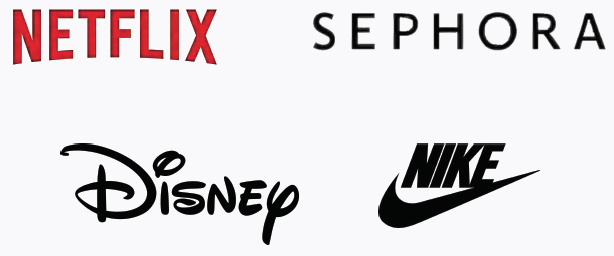Industry Brief
Beyond Technology Hype: Is Your Commerce Stack a Launchpad or a Liability?
Q1, 2025
The commerce technology landscape has reached a critical inflection point as organizations struggle to balance innovation with practical implementation. As digital commerce expectations continue to converge across B2B and B2C sectors, organizations are increasingly finding that their technology choices can either drive innovation or hold them back, with 56% of organizations regretting their largest tech purchases. This fundamental tension has created a false dichotomy between rigid, monolithic platforms that limit growth and over-composed architectures that introduce unnecessary complexity, hidden costs, and extended implementation timelines—ultimately undermining the very business agility they promised to enhance.
This report examines how businesses can move beyond architectural debates to focus on what truly matters: a commerce stack that delivers integrated business services with selective flexibility where differentiation is essential. It explores how modern commerce technology should be evaluated based on four critical metrics—faster time-to-market, customer experience innovation, cost efficiency, and revenue growth—rather than technical specifications or architectural philosophies. The analysis in the report provides a framework for achieving the optimal balance between pre-built capabilities and targeted customization, enabling organizations to launch quickly, adapt strategically, maintain stability, and scale efficiently without becoming software companies by default.
FOUR KEY B2C COMMERCE IMPERATIVES
 Incisiv
Incisiv
Here’s a preview of the report. The full report is available for free download via the form below.
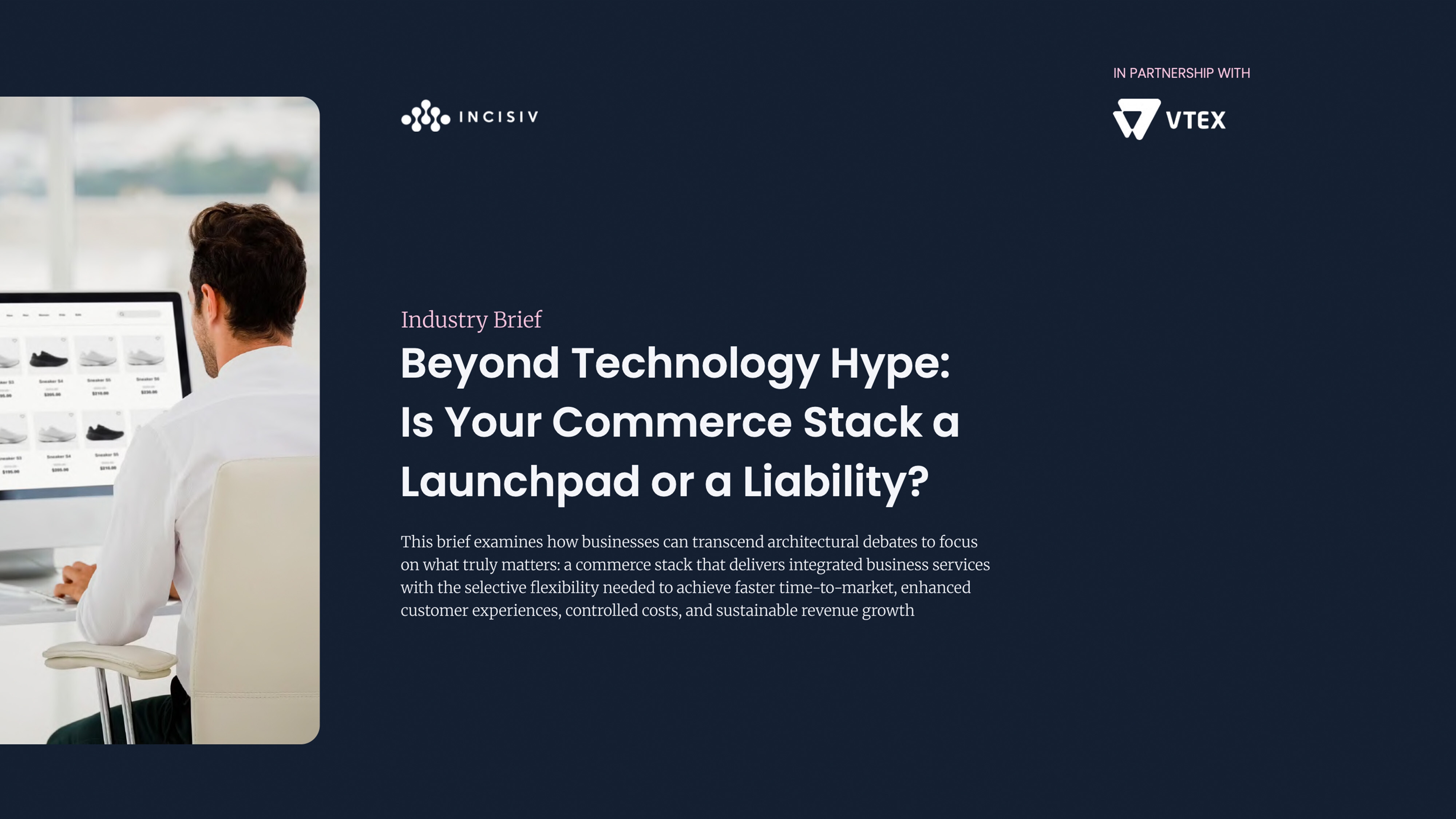
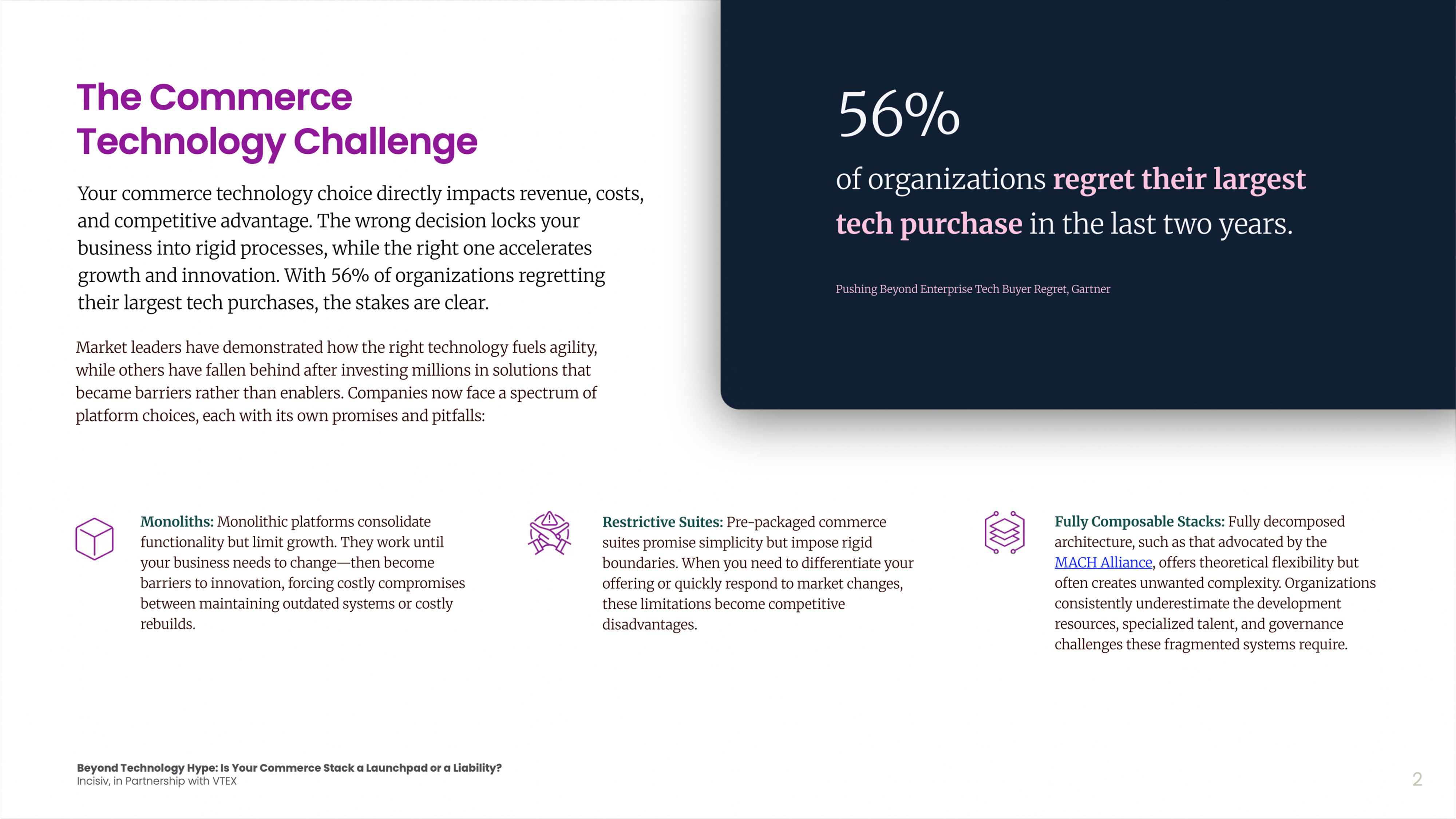
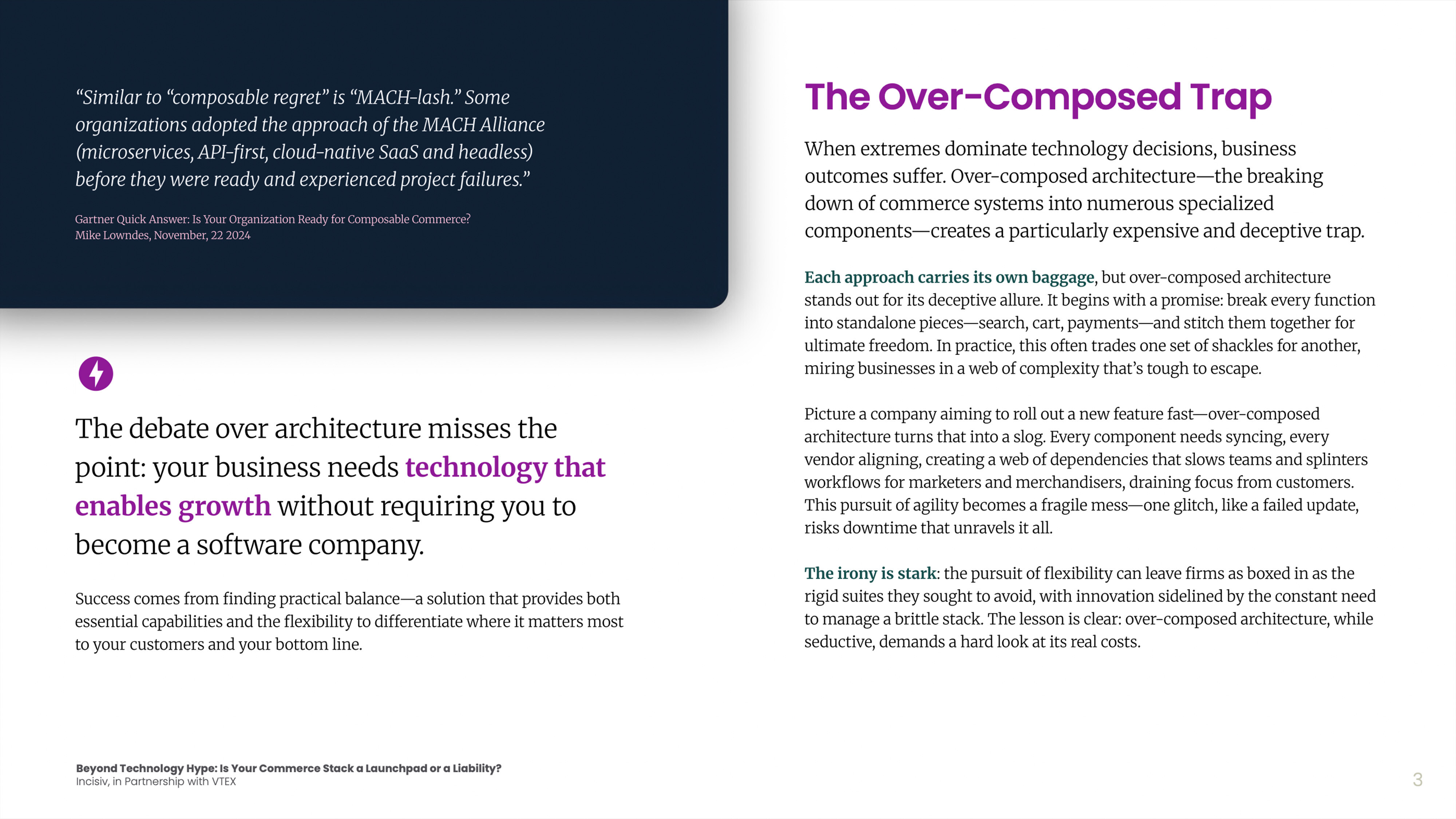
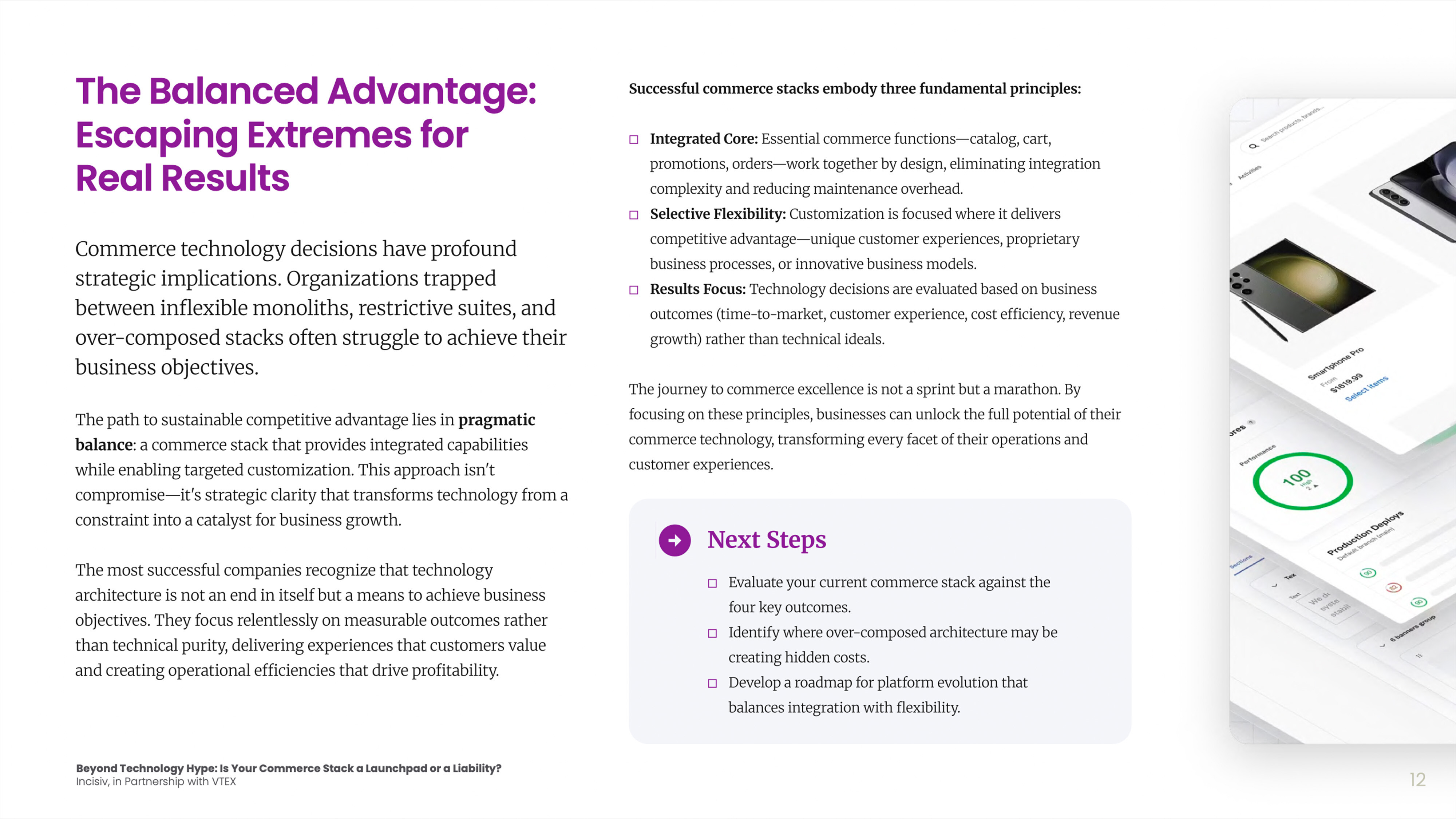




As consumers continue to reshape their expectations,
enterprises must contend with a uniquely challenging landscape.
The consumer technology landscape is forever changing.
From Pinterest to TikTok, WeChat to Instagram, new experiences can rapidly gain consumer adoption and relevance.

From augmented reality to voice, smartwatches to chatbots, consumers are constantly embracing new interaction paradigms.
Commoditized convenience is eroding loyalty and margin.
Consumers expect convenience. If you can't deliver it, they'll go elsewhere - e.g. next day shipping becoming the new standard.
Walmart will reportedly lose USD 1 billion on eCommerce revenue of USD 21 billion this year as it faces challenges in its bid to complete against Amazon – from trouble integrating its DNVB acquisitions to impact on margin from its next-day delivery operations.
Consumers value experiences that are curated to fit their lives better.
They want to engage, be served, and transact at their time, their pace, their place. They have little patience, infinite choice and the freedom to swipe left at the slightest hint of friction.
